HiPP HA vs. HiPP Comfort Comparison
51 hours of research 3 minute read

For parents of infants with dietary restrictions, hypoallergenic baby formulas are a lifesaver. At the same time, they can be perplexing due to the abundance of available options. HiPP HA and HiPP Comfort are two popular hypoallergenic formulas that will be discussed in this article. We'll also talk about how these two differ and whether one is better compared to the other.
HiPP European baby formula is well-known for being among the best in infant nutrition in the world. HiPP European baby formulas are made with organic ingredients and are high in minerals and antioxidants, which infants and toddlers require to meet immunity, bone strength, and brain development milestones.
What Makes a Formula "Hypoallergenic"?
It is the use of "hydrolysate," which is a broken down or "hydrolyzed" milk protein structure that is physically larger than the human breast milk protein structure. The hydrolyzation process breaks down the protein, resulting in a smaller and more uniform protein. As a result, the body of your infant is less likely to react negatively to hydrolyzed protein.
HiPP, interestingly, uses the same 100% whey protein hydrolysate (86-87% broken down) for both HA and Comfort (albeit in slightly different amounts), implying that Comfort is similar to a "hypoallergenic" formula in this regard.
What Are The Differences & Similarities Between HiPP Comfort and HiPP HA?
- HiPP HA is designed for infants and toddlers who are predisposed to food allergies, have a cow's milk sensitivity, or suffer from reflux. It contains probiotics and prebiotics to aid absorption and promote healthy gut flora, as well as partially hydrolyzed lactose proteins to aid digestion.
- HiPP Comfort is a lactose-based formula, but it is distinguished by its lower lactose content and partially hydrolyzed lactose proteins (86%-87% broken down). Hydrolyzed lactose proteins aid digestion by breaking down milk molecules into simpler molecules, making it easier for a baby's body to process milk-based formula. HiPP Comfort also includes prebiotics and probiotics to help with absorption and digestion.
HiPP Comfort & HiPP HA Comparison
| HiPP Comfort | HiPP HA | |
|---|---|---|
| Organic Lactose (Hydrolyzed) | ✅ | ✅ |
| Prebiotics | ✅ | ✅ |
| Probiotics | ✅ | ✅ |
| Hydrolyzed Protein | ✅ | ✅ |
| For Gas | ✅ | ✅ |
| For Colic | ✅ | - |
| For Constipation | ✅ | - |
| For Reflux | ✅ | ✅ |
| Food Allergy Prone | ✅ | ✅ |
| Cow Milk Protein Sensitivity | ✅ | ✅ |
In practice, we find that some parents looking for a "hypoallergenic" formula find success with Comfort, but this is often due to their infants doing better with the lower levels of lactose found in Comfort. When there is a family history of allergies or suspected milk protein sensitivities, pediatricians typically recommend HiPP HA.
Is HiPP HA More Hydrolyzed Than HiPP Comfort?
In reality, the proteins in HiPP Comfort and HiPP HA are broken down by 86-87% in both formulas. Many experts would describe this as partially hydrolyzed formula. These are free of allergens. They're designed for babies who can't digest or are allergic to whole cow's milk protein. These formulas disassemble casein (the protein found in cow's milk).
Both formulas are hydrolyzed, with reduced lactose, soy-free, and nut free. They both contain no gluten, GMOs, or preservatives. It is worth noting that even though both HiPP HA and HiPP Comfort use only organic ingredients, neither of these formulas is classed as an organic formula because, by definition, the word "organic" implies unaltered by humans. There is no such thing as an organic hydrolyzed milk protein, which means that even though the source milk starts as organic milk - once it undergoes hydrolisis it can no longer be called organic.
HiPP Hypoallergenic & HiPP Comfort Comparison
| Carbohydrate | Milk Protein | Primary Fat Source | |
|---|---|---|---|
| HiPP Comfort | Maltodextrin + Starch + Hydrolyzed Lactose | Partially hydrolyzed whey protein (no casein) | Vegetable Oils + Beta-Palmitate from palm and sunflower oils |
| HiPP HA PRE | Hydrolyzed Lactose | Partially hydrolyzed whey protein (no casein) | Vegetable Oils (palm + rapeseed + sunflower) |
| HiPP HA 1 | Hydrolyzed Lactose | Partially hydrolyzed whey protein (no casein) | Vegetable Oils (palm + rapeseed + sunflower) |
| HiPP HA 2 | Hydrolyzed Lactose + Starch | Partially hydrolyzed whey protein (no casein) | Vegetable Oils (palm + rapeseed + sunflower) |
| HiPP UK Comfort | Maltodextrin + Starch + Hydrolyzed Lactose | Partially hydrolyzed whey protein (no casein) | Vegetable Oils + Beta-Palmitate from palm and sunflower oils |
| HiPP Dutch HA 1 | Hydrolyzed Lactose | Partially hydrolyzed whey protein (no casein) | Vegetable Oils (palm + rapeseed + sunflower) |
| HiPP Dutch HA 2 | Hydrolyzed Lactose | Partially hydrolyzed whey protein (no casein) | Vegetable Oils (palm + rapeseed + sunflower) |
The final significant difference between HiPP Comfort and HA is in the fat blend. HiPP HA, like most other HiPP formulas, is made up of a blend of vegetable oils (palm oil, rapeseed oil, and sunflower oil). HiPP Comfort, on the other hand, makes use of beta-palmitate as well.
According to research, what does beta palmitate improve?
- Fatty acid metabolism
- Calcium absorption
- Bone density
- Gut health
- Consistency
Best Hypoallergenic Baby Formula

If your baby is allergic to cow's milk protein, symptoms may appear between the ages of three and six months. Hypoallergenic formula is intended for babies who have difficulty digesting cow's milk protein.
The term "hypoallergenic" refers to proteins in the formula that have been hydrolyzed or broken down into smaller pieces. Infants tolerate this formula well and have fewer allergic reactions. The size of the formula protein should be determined by how severe your baby's allergic reaction is.
The American Academy of Pediatrics recommends using a hypoallergenic formula only when the baby has obvious medical symptoms. A hypoallergenic formula should be considered if a baby has a family history of food allergies. Food allergies in babies increase by 10% if either the mother or father has allergies, and by 20% if both parents have allergies.
If a baby is allergic to milk protein and exhibits the following symptoms, a hydrolyzed formula may ultimately be prescribed:
- Reflux
- Constipation
- Gassiness
- Stool with blood
- Diarrhea
- Vomiting
- Colic
- Itchy rash
Your pediatrician may recommend formulas from various brands that may be suitable for your baby. Organic Life Start recommends the following hydrolyzed formulas that do not contain corn syrup. Always ask your pediatrician for advice unique to your baby.
✓Contains Probiotics & Prebiotics
✓ No sugar, no corn syrup, no soy
✓ Hydrolyzed milk proteins reduce allergic reactions
✓ Popular for constipated babies
Check Price-
Why Choose? If your baby is lactose intolerant or allergic to cow's milk. You can use this formula if you haven't tried any other European hypoallergenic formula.
- Contains only whey (no casein).
- Protein has been partially hydrolyzed.
- It contains the same amount of lactose as a non-HA formula.
- Starch is present.
- It has both prebiotics and probiotics.
- DHA and ARA are included for brain development.
✓Contains Probiotics & Prebiotics
✓ No sugar, no corn syrup, no soy
✓ Reduced lactose with hydrolyzed milk protein
✓ Easy to digest formula for sensitive babies
Check Price-
Why Choose? If your baby is newborn to 1 year old and has constipation, colic, and food allergy.
- Contains hydrolyzed protein.
- It has a special fat structure to aid easy digestion and soft stools.
- Reduced lactose to reduce gut irritation.
- Easily digestible.
- It contains prebiotics and probiotics.
- Contains DHA & ARA for brain development.
✓ Has Prebiotics and Probiotics
✓ Hydrolyzed milk proteins reduce allergic reactions
✓ No sugar, no corn syrup, no soy
✓ Easy to digest formula for sensitive babies
Check Price-
Why Choose? It is HiPP's newest hydrolyzed formula perfect for babies who have constipation and/or allergies as well as babies who are sensitive to cow's milk.
- Hydrolyzed milk proteins for reduced allergic reactions.
- A nutritionally complete formula with prebiotics & probiotics.
- It contains the same amount of lactose as a non-HA formula.
- Non GMO Formula.
- It has both prebiotics and probiotics.
- DHA and ARA are included for brain development.
✓ Reduced lactose with hydrolyzed milk protein
✓ No sugar, corn syrup, or soy
✓ Contains Prebiotics, DHA, and ARA
✓ Popular for the dietary management of colic and constipation
Check Price-
Why Choose? It is a very popular solution for little ones with digestive needs. It is specially formulated to provide gentle relief for infants with colic, constipation, or other digestive discomforts.
- With reduced lactose and hydrolyzed protein.
- Made with a special combination of natural prebiotics and fibers, carefully chosen to support healthy gut function and promote softer stools.
- Easily digestible.
- It contains prebiotics.
- Whey / Casein Ratio is 100/0.
Substituting HiPP HA 1 for HA 2
Some parents have made the active decision to continue using HiPP HA stage 1 for their baby, even after they are older than six months. Technically speaking, HiPP HA 2 is intended for babies aged six months and older whereas HA 1 is for babies aged up to six months of age, but for personal reasons some parents continue using HA stage 1 - such as due to HA 2 formula shortage or because they purchased too much HA stage 1. As long as your pediatrician recommends or suggests that it is ok to continue using HiPP HA stage 1 with your older baby, there are some additional thoughts worth considering:
- HiPP HA 1 has somewhat lower levels of iron than HiPP HA 2 - you may need to to supplement this iron in your baby's diet.
- If you already supplement your baby's diet with solid foods, iron supplementation may not be necessary - again this depends on how far along your baby is with getting used to early-stage solid foods.
- HA 1 and HA 2 have similar levels of calories, but feeding instructions between the two formulas are different - ask your pediatrician how much HA 1 to give to your baby. It is very likely they will suggest the same amounts as per HA 2 guidelines.
Especially in times of baby formula shortages, parents are having to choose between modifying an already existing and readily available formula vs. having to switch entirely. HiPP HA stage 1 is the most similar to HiPP HA stage 2, and under the right pediatrician supervision parents can continue using HiPP HA 1 if they follow the guidance for any additional supplements that your baby may require. Especially in the case where a parent does not want to switch away from a hydrolyzed formula, continuing to use HiPP HA stage 1 with appropriate supplements can be a middle-ground strategy for many parents and their babies. Talk to your pediatrician if substituting HiPP HA 1 for HiPP HA 2 is suitable for your baby, as well as HiPP Comfort for HiPP HA.
Hydrolyzed Formulas
The main difference between HiPP Comfort and HA is that the former is dairy-free while the latter contains casein. Both formulas are considered partially hydrolyzed baby formulas, but as you can see, there are also some important differences in their ingredient lists. Always consult with your pediatrician when modifying the manufacturer's feeding advice to make sure that it remains suitable for your baby.
Most Popular Hypoallergenic Formula
Organic Life Start is committed to providing accurate, reliable, and trustworthy information to parents and caregivers. We carefully choose credible sources and follow a meticulous fact-checking process to uphold the highest standards in infant nutrition and parenting advice. To learn more about our dedication to accuracy, please explore our editorial guidelines.
Link To Sources


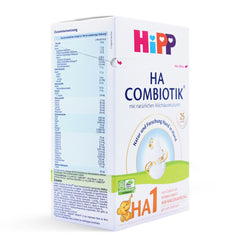
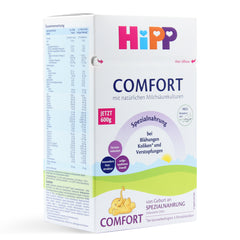
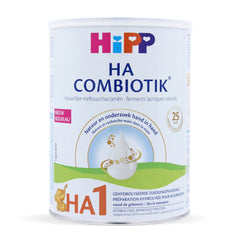


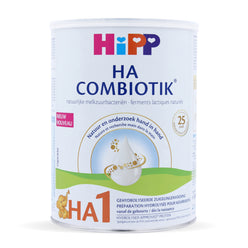

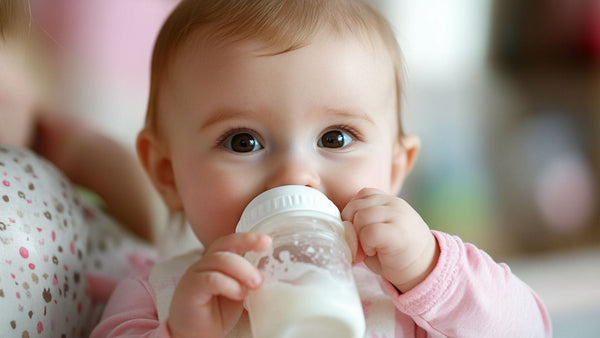





Leonard Skidmore -
As a dad, I really appreciate posts like this that slow things down and explain the details clearly. When you’re choosing a formula, the ingredient differences really matter, especially when your baby has tummy issues. I found it helpful to learn that HiPP Comfort is dairy-free, while HiPP HA still contains casein, even though both are partially hydrolyzed. That kind of detail isn’t always easy to find, and it makes a big difference when you’re trying to decide what’s best for your child. I also liked how you reminded parents to check with their pediatrician before changing how a formula is used. It feels reassuring to have information that supports careful, informed choices instead of rushing decisions. Thanks for breaking this down in a way that parents can actually understand and use.
Hector Jacobo -
December 26, 2025
Thank you for this comparison! I’ve been trying to decide between HiPP HA and HiPP Comfort for my baby, and it’s really helpful to see the differences explained so clearly. I didn’t realize that Comfort is dairy-free while HA still has casein—that makes me wonder which would be gentler on my baby’s tummy. I’d love to hear more about how each formula affects digestion and fussiness, especially for babies who seem a bit gassy or sensitive. Personally, I’ve noticed that even small changes in formula can make a big difference, so it’s reassuring to have guidance like this. Of course, I’ll check with our pediatrician before making any switches, but hearing real experiences and more details would be really helpful. Thanks for sharing such useful information!
Shawn -
December 15, 2025
Could you go into more detail about how each formula handles digestion issues differently? I’m especially curious when parents should choose Comfort over HA, and whether one tends to work better for gas versus suspected milk protein sensitivity.